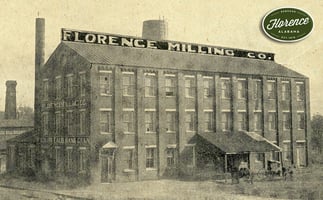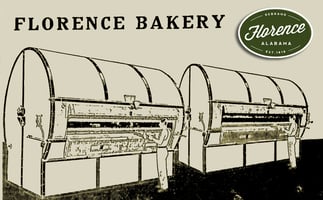REBRAND FLORENCE PARTNERSHIP Shoals History is excited to partner with the Rebrand Florence...
Thimbelton: The Storied Past of Florence's Architectural Gem
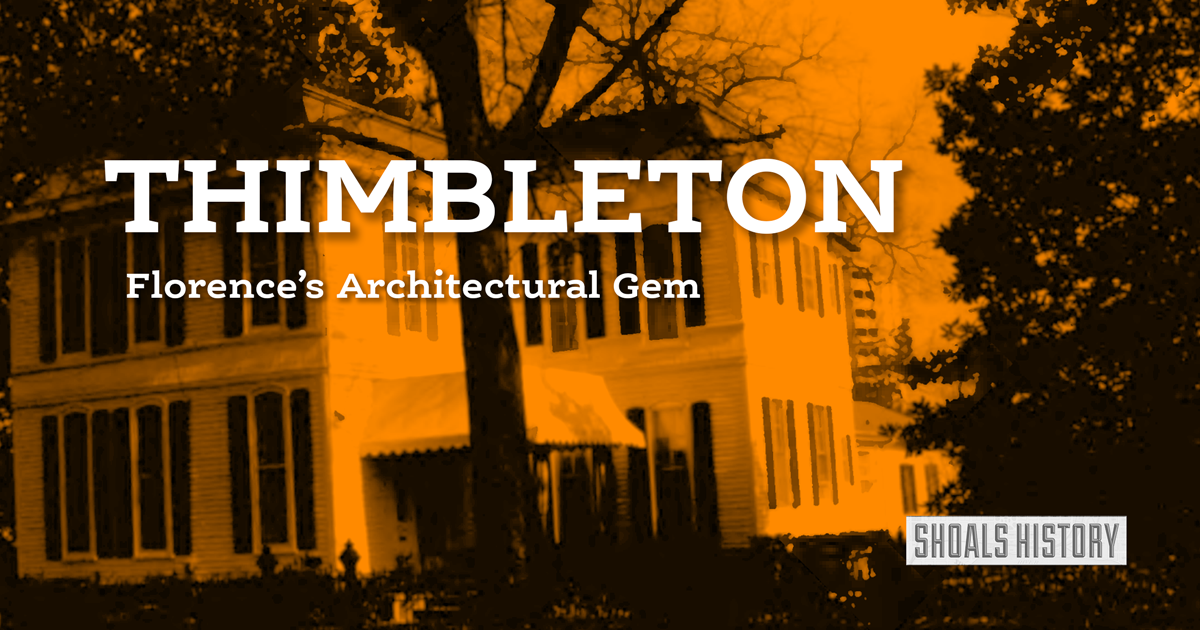
Located at 221 West Tuscaloosa Street in Florence, Alabama, the Thimbelton home stands as a testament to the rich history and architectural evolution of the region. Originally constructed in 1830 as a two-story frame home, Thimbelton underwent a striking transformation in the 1870s, adopting the iconic Second Empire style. With its false mansard roof and exceptional iron roof cresting, this historic residence remains an integral part of the Locust Street Historic District in downtown Florence.
A Tapestry of Ownership
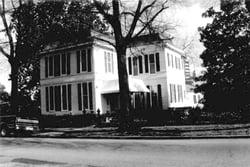 While the original builders of Thimbelton are actually unknown, the home's lineage can be traced through various notable figures who left their mark on its history. Renowned architect (and surveyor who laid the city of Florence), Ferdinand Sannoner played a crucial role in bringing this home to life. In 1839, Thomas Kirkman inherited the property, setting the stage for a series of transitions. Kirkman is known for also inheriting the Forks of Cypress upon James Jackson’s death in 1840. Thimbleton was acquired in 1881 by Mr. William P. Campbell (treasurer of the Florence Land Company), passing it through the hands of his widow, Mary Coffee O'Neal.
While the original builders of Thimbelton are actually unknown, the home's lineage can be traced through various notable figures who left their mark on its history. Renowned architect (and surveyor who laid the city of Florence), Ferdinand Sannoner played a crucial role in bringing this home to life. In 1839, Thomas Kirkman inherited the property, setting the stage for a series of transitions. Kirkman is known for also inheriting the Forks of Cypress upon James Jackson’s death in 1840. Thimbleton was acquired in 1881 by Mr. William P. Campbell (treasurer of the Florence Land Company), passing it through the hands of his widow, Mary Coffee O'Neal.
One of the most prominent owners in Thimbelton's history was Edward A. O'Neal III, who took possession through inheritance. O'Neal served as the president of the American Farm Bureau Federation during the administration of FDR, adding a layer of historical significance to the house. The intertwining of Thimbelton's narrative with key figures in American history further solidifies its place in the heritage of Florence.
A Second Empire Marvel
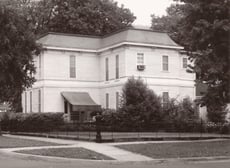 Upon completion of the renovations, Thimbelton emerged with a false mansard roof, a distinctive feature visible from behind the house. The ornate iron roof cresting further accentuates its architectural prowess, adding a touch of grandeur to the structure. The Second Empire style is characterized by its opulent design, marked by wide eaves, brackets, and segmented arches crowning the attenuated windows – all of which are prominent features of Thimbelton.
Upon completion of the renovations, Thimbelton emerged with a false mansard roof, a distinctive feature visible from behind the house. The ornate iron roof cresting further accentuates its architectural prowess, adding a touch of grandeur to the structure. The Second Empire style is characterized by its opulent design, marked by wide eaves, brackets, and segmented arches crowning the attenuated windows – all of which are prominent features of Thimbelton.
Italianate Elegance
Thimbelton stands out in the Locust Street Historic District as the sole representative of Italianate design, a testament to its unique charm. The name itself harkens back to a tailor shop thought to once occupied the site, adding a touch of nostalgia to the property's identity.
The Italianate influence is evident in Thimbelton's features, including the Second Empire roof, ornamental cresting, wide eaves, and decorative iron open rail balustrade. The windows, in true Italianate fashion, are attenuated and crowned by segmental arches, contributing to the overall elegance and sophistication of the design.
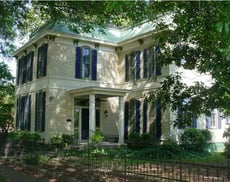 Thimbelton's journey from a modest two-story frame home to a Second Empire masterpiece is a captivating chapter in Florence's architectural and cultural history. Its evolution, intertwined with the lives of notable individuals, showcases the dynamic nature of this historic residence. As Thimbelton stands as the sole representative of Italianate design in the Locust Street Historic District, it invites residents and visitors alike to step into the past and appreciate the timeless elegance that defines this iconic home in Florence, Alabama.
Thimbelton's journey from a modest two-story frame home to a Second Empire masterpiece is a captivating chapter in Florence's architectural and cultural history. Its evolution, intertwined with the lives of notable individuals, showcases the dynamic nature of this historic residence. As Thimbelton stands as the sole representative of Italianate design in the Locust Street Historic District, it invites residents and visitors alike to step into the past and appreciate the timeless elegance that defines this iconic home in Florence, Alabama.
